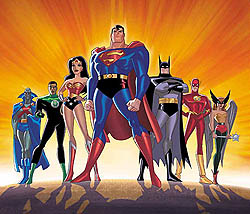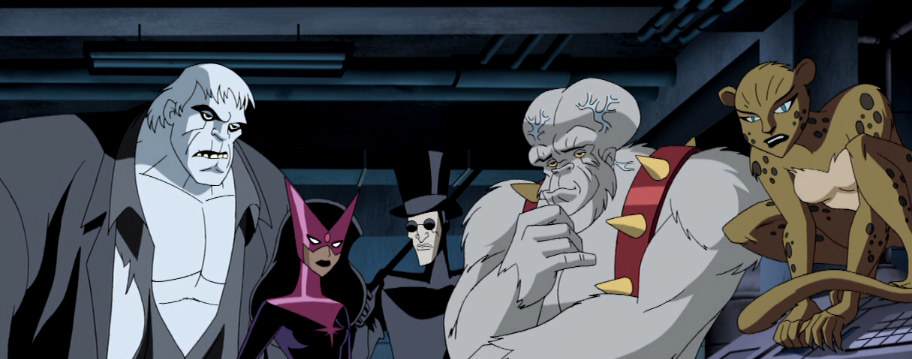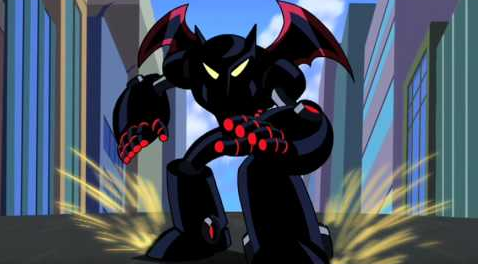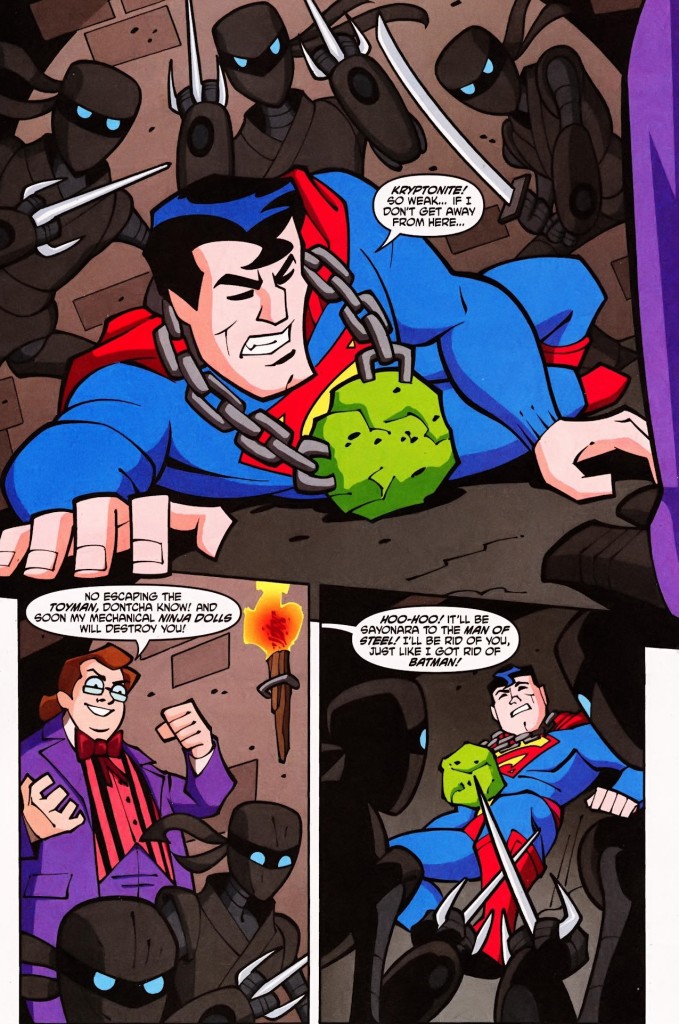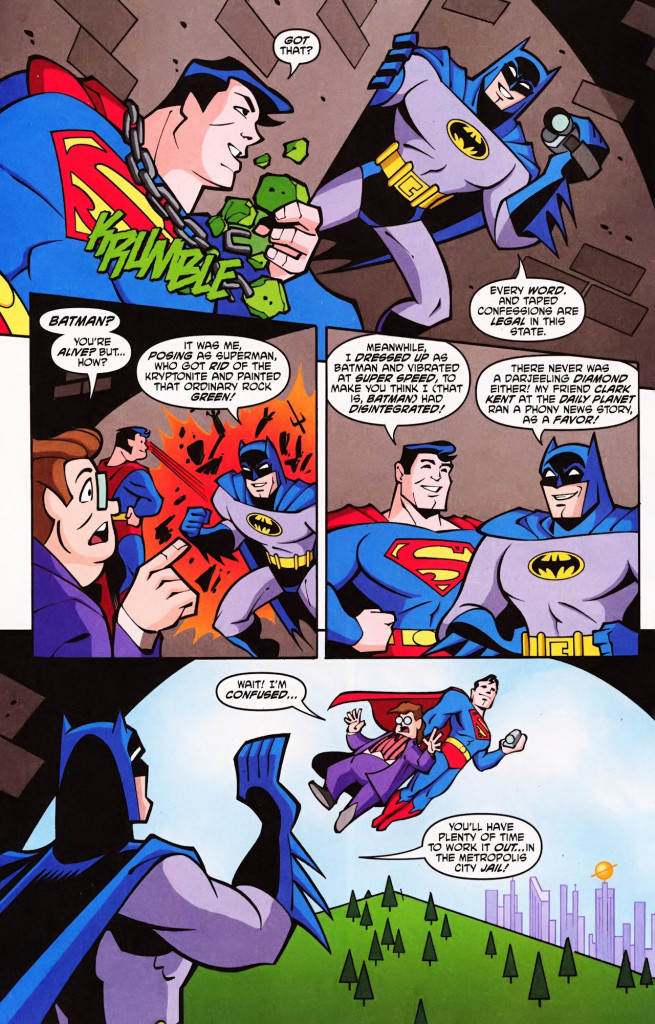I wish I had something more original to say about the latest hit in the Marvel Cinematic Universe, but I’m with the crowd: Ryan Coogler’s Black Panther is a masterpiece. Building on utopic alternate history to respond to Afro-pessimism, the film – like the earlier comics – is as viscerally thrilling as it is provocative. It not only puts a clever spin on enduring debates about isolationism, imperialism, and racial oppression, but it also engages with topical questions about black activism and the military’s duty to an out-of-control leader… and it does this in an entertaining, inspirational way. If the first part of the movie is a twist on James Bond, the second part feels like a twist on The Spook Who Sat by the Door (and then the mid-credits scene gives us a twist on Trump’s speech at the UN). Black Panther even dodges the recurring criticisms hurled at the MCU – the climax doesn’t involve yet another portal to another world, the drama isn’t systematically undercut by jokes, and the villain is complex and memorable.
I particularly like the fact that the tension between T’Challa and Erik Killmonger isn’t a mere retread of the old ‘pacifist reformer Professor X vs violent revolutionary Magneto’ debate. Yes, that’s in there (with a ‘nationalist vs internationalist’ variation), but the film complicates the politics of the thing by adding extra layers – Killmonger may embody the real-world Black Panther Party on one level, yet he is also explicitly linked to US black ops, so his designs sound at once emancipatory and despotic (and his tragic fate has an effect on the hero, who doesn’t just stay in the opposite side, but ends up seeking a middle ground). Another way to look at it is that Erik provides an African-American perspective in a story about imagining Africa itself, thus highlighting the connections and the differences between the two contexts.
All this got me thinking again about how lame it is that DC/Warner haven’t been able to deliver a genuinely great superhero film since 2008’s The Dark Knight, a decade ago. Even their most watchable movies since then have been little more than OK riffs on Marvel flicks, only with a darker palette – Wonder Woman was basically their feminist version of Captain America: The First Avenger (with a bit of Thor thrown in) and Justice League was an uninspired remix of the Avengers blockbusters (with a lot of Civil War). Sure, there are some nice scenes in those two pictures (on the boat, at the cemetery), but so much of it is instantly forgettable – including the climaxes! – and so few of it feels worth revisiting. Seriously, even if Warner just wants to rule the realm of grim & gritty comic book adaptations, then they still have to beat Netflix’s The Punisher, which managed to be one hell of a hardboiled, politically-charged show.
I get it that that many DC fans accepted last year’s Justice League with goodwill (hey, at least it felt less botched than Suicide Squad!), but let’s face it: if this had been a comic, we would be accusing it of poor art and lazy writing, what with the ultra-generic villain, set pieces, and quips… After all, there are actually fantastic stories about this team already out there – most notably Grant Morrison’s and Frank Quitely’s Earth 2 – and the Zack Snyder/Joss Whedon film does not do them justice at all!
It’s not about the source material. Hell, it wasn’t even always this way – in 2005, the year Christopher Nolan successfully rebooted the Batman franchise, Marvel was still putting out the reviled Elektra and the embarrassingly trashy Man-Thing… The truth is that there isn’t anything inherent to the DCU that prevents it from fueling a satisfying picture franchise. In fact, the Dark Knight himself has starred in a number of TV shows that showcased how awesome it can be to see DC superheroes flying around on the screen…
After the acclaim of the incredibly noirish Batman: The Animated Series, the wonderful Max Fleischer-inspired, Kirbyesque Superman: The Animated Series, and the cyberpunk, anime-influenced Batman Beyond, in 2001 animator (and co-producer) Bruce Timm expanded his take on the DCU with the operatic Justice League.
Revolving around the titular team, this TV series – directed by Dan Riba and Butch Lukic – told accessible, old school superhero yarns with grandiose music, epic battles, and earth-shattering cliffhangers, all filtered through Timm’s distinctively angular, stylish designs… The whole thing felt archetypical and larger-than-life, as each tale was told over two or three episodes, nailing all the beats and tropes of the genre along the way. At a time when superhero comics were at their most cynical, the Justice League cartoon evoked the widescreen aesthetics of The Authority, but it also sought to conjure up the childlike sense of excitement and joy of reading the classics.
Besides the trio of Batman, Superman, and Wonder Woman, the roster included the Martian Manhunter, Hawkgirl, Green Lantern (John Stewart), and the Flash (Wally West). They were all given chances to shine and slick character development, even though – as is usually the case – the writers clearly had a soft spot for the Caped Crusader. Voiced by the talented Kevin Conroy, Batman often got the most badass moments in each episode. A high point in this regard was ‘Injustice for All,’ where he managed to outsmart a whole gang of weird supervillains.
(Still, my favorite Batman moments actually take place in the nifty two-parter ‘Maid of Honor.’)
The best tales were typically written by Stan Berkowitz or Dwayne McDuffie, who knew how to ride the wave between smart and schlocky. Berkowitz did ‘The Savage Time,’ where the team – sans Batman – straight-up fought in World War II (because pop culture will never get tired of watching Nazis get punched). McDuffie was responsible for ‘Hereafter,’ a pulpy saga that somehow merged Death of Superman with Conan the Barbarian and Planet of the Apes!
I think what made the series work was that JL – unlike the Zack Snyder films – didn’t try to turn the source material into something that didn’t fit, it just let the original appeal shine through the adaptation. After all, the beauty of superhero stories doesn’t come through when they are treated like narrow metaphors as much as when they are treated like magical adventures that speak to the imagination, engaging in abstract values. Marvel Studios seem to get this – a while back, Jonathan McCalmont wrote a good essay about the first Captain America movie, arguing that, even though the film may have had little to say about WWII itself (Cap isn’t even fighting actual Nazis most of the time), its fantastical elements still lend themselves to thought-provoking interpretations. (He also wrote an interesting piece on X-Men: First Class.)
After two successful seasons, in 2004 the show was upgraded to Justice League Unlimited, further enlarging the team’s roster to encompass most DC superheroes. The result – now directed by Dan Riba and Joaquim dos Santos – was even more of a geek feast: the headquarter scenes featured fan-pleasing cameos by lesser-known characters in the background and you got to see stuff like Vigilante and Shining Knight taking the elevator while discussing the subtext of Dirty Harry.
Not only did JLU expand the cast to a wider range of heroes, it was also less afraid to go for goofier-sounding ideas, such as temporarily turning Batman, Superman, Wonder Woman, and Green Lantern (plus an adorable Etrigan, the Demon) into children. Instead of multiple-part tales, we now got mostly one-and-done gems such as ‘The Greatest Story Never Told,’ in which we follow Booster Gold on crowd control while the Justice League battles Mordru in the background, or ‘This Little Piggy,’ in which Batman joins forces with the magician Zatanna after Wonder Woman gets transformed into a pig. The latter was written by Paul Dini, who always does a swell job with the banter between Batman and Zatanna, both in comics and on TV, so of course the episode is an absolute riot. (Plus, it becomes pretty clear that there is something going on between Bruce and Diana… as if Batman’s love life wasn’t interesting enough already!)
The show worked as a lively celebration of the kind of wild imagery and concepts that have driven superhero comics for decades. For instance, the episode ‘Chaos at the Earth’s Core’ – written by Matt Wayne – kept jumping from one kickass set piece to the next, as Stargirl and Supergirl fought a kaiju turtle and a reptilian army (armed with laser weapons and dinosaurs), eventually joining Warlord on a sword & sorcery quest to overthrow a ruthless dictator/wizard. There was also ‘Dark Heart,’ which was scripted by Warren Ellis and damn it if you couldn’t tell: it burst with witty zingers, cool action, nanotech sci-fi, and an insane amount of neat Easter Eggs.
That said, Justice League Unlimited still kept the overall style of its predecessor, mostly approaching these stories with a straight face and an imposing score as it delivered slugfests galore and powerful emotional payoffs. The second season had a loose overarching subplot, gradually pitting the Justice League against Amanda Waller’s Task Force X in a saga packed with high stakes and political intrigue. The third season subtly built up to the mother of all showdowns.
If Warner would simply take a string of JL or JLU episodes and translate their spirit to the big screen, I’m sure the outcome would be much more impressive than last year’s patchy Justice League movie… My vote goes to ‘Grudge Match,’ in which the gambling entrepreneur Roulette charges people to watch the female leaguers fight each other – it’s one of those amusing premises that simultaneously condemns and exploits our basic instincts, since the villain is basically giving us exactly what we want to see! Or maybe producers could look for inspiration in ‘Far From Home,’ in which Supergirl single-handedly battles the mind-controlled Legion of Super-Heroes in the 31st century, leading up to a touching denouement.
Or they could go in another direction altogether and fully embrace the most bonkers side of their properties, turning it up to eleven. There is a precedent for this as well, namely 2008’s reboot Batman: The Brave and the Bold.
Directed by Ben Jones, Brandon Vietti, Michael Chang, and Michael Goguen, The Brave and the Bold took itself much less seriously while still delivering highly satisfying superhero stories, told at breakneck pace with the help of an unbelievably catchy soundtrack and some of the best one-liners of the Dark Knight’s career (‘Madmen like you come in many forms, but liquid, gas, or solid they always wind up in the same state… inert!’). With little regard for previous continuity, this series featured team-ups with third-tier heroes, each with a different kind of relationship with Batman – based, for example, on admiration (Blue Beetle), camaraderie (Aquaman), or competitiveness (Green Arrow) – thus bringing out various sides of the Caped Crusader. The episodes were self-contained, except for the superb two-parters ‘Deep Cover for Batman!/Game Over for Owlman!’ (in which the Dark Knight infiltrated the Injustice Syndicate, in a parallel Earth) and ‘The Siege of Starro!’ (in which B&B proved that even a silly, politically incorrect character like B’wana Beast could be awesome).
It’s hard to overstate how much fun the show was: for three glorious seasons, Brave and the Bold drew on Bob Haney’s everything-but-the-kitchen-sink attitude to plotting, Jack Kirby’s mad energy, and Adam West’s deadpan humor. One adventure had the Atom travelling inside Batman’s body, another one was a bizarre riff on Wacky Races. There were contributions by some great DC writers, with Gail Simone doing a tongue-in-cheek script about the Birds of Prey (‘The Mask of Matches Malone!’), J.M. DeMatteis doing a couple of comedic ones about the JLI (‘Shadow of the Bat!’ and ‘Time Out for Vengeance!’), and Paul Dini doing a trio of metafictional ones about Bat-Mite (‘Legends of the Dark Mite!,’ ‘Bat-Mite Presents: Batman’s Strangest Cases!,’ and ‘Mitefall!’).
B&B often recontextualized iconic Silver Age images, yet it also oozed a modern vibe, each episode filled with ‘hell yeah’ moments and exploding bat-grenades. Seriously, there was even a mecha-Batmobile:
Brilliant episodes are too many to list, but among the standouts I would highlight ‘The Color of Revenge!’ (a sequel of sorts to the 1966 Batman TV series), ‘Chill of the Night!’ (which reimagined the classic Joe Chill tale from Batman #47), ‘The Knights of Tomorrow!’ (a new take on the future of the Dynamic Duo), ‘Joker: The Vile and the Villainous!’ (told from the Joker’s perspective, making Batman look like a villain), ‘Battle of the Superheroes!’ (a homage to pre-Crisis Superman comics), and, of course, the musical masterpiece ‘Mayhem of the Music Meyster!’
The comic book spinoffs – Batman: The Brave and the Bold and All-New Batman: The Brave and the Bold – were just as frantic. Warner should just pick a random issue and build on it, as pretty much all of them contain enough material for a summer blockbuster. Hell, look at these two frenetic opening pages and tell me they aren’t more fun than all of the recent movies featuring the Dark Knight and the Man of Steel:

